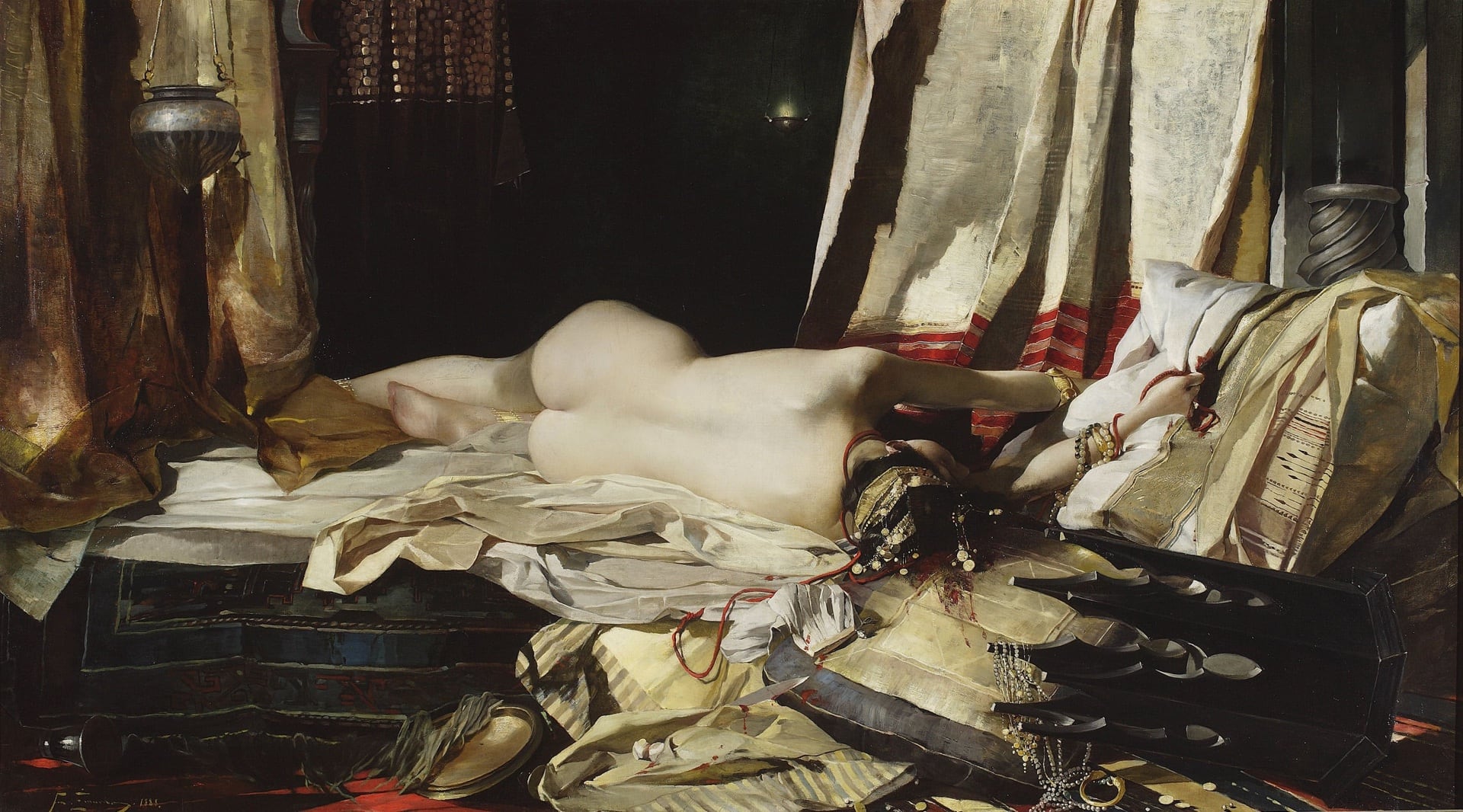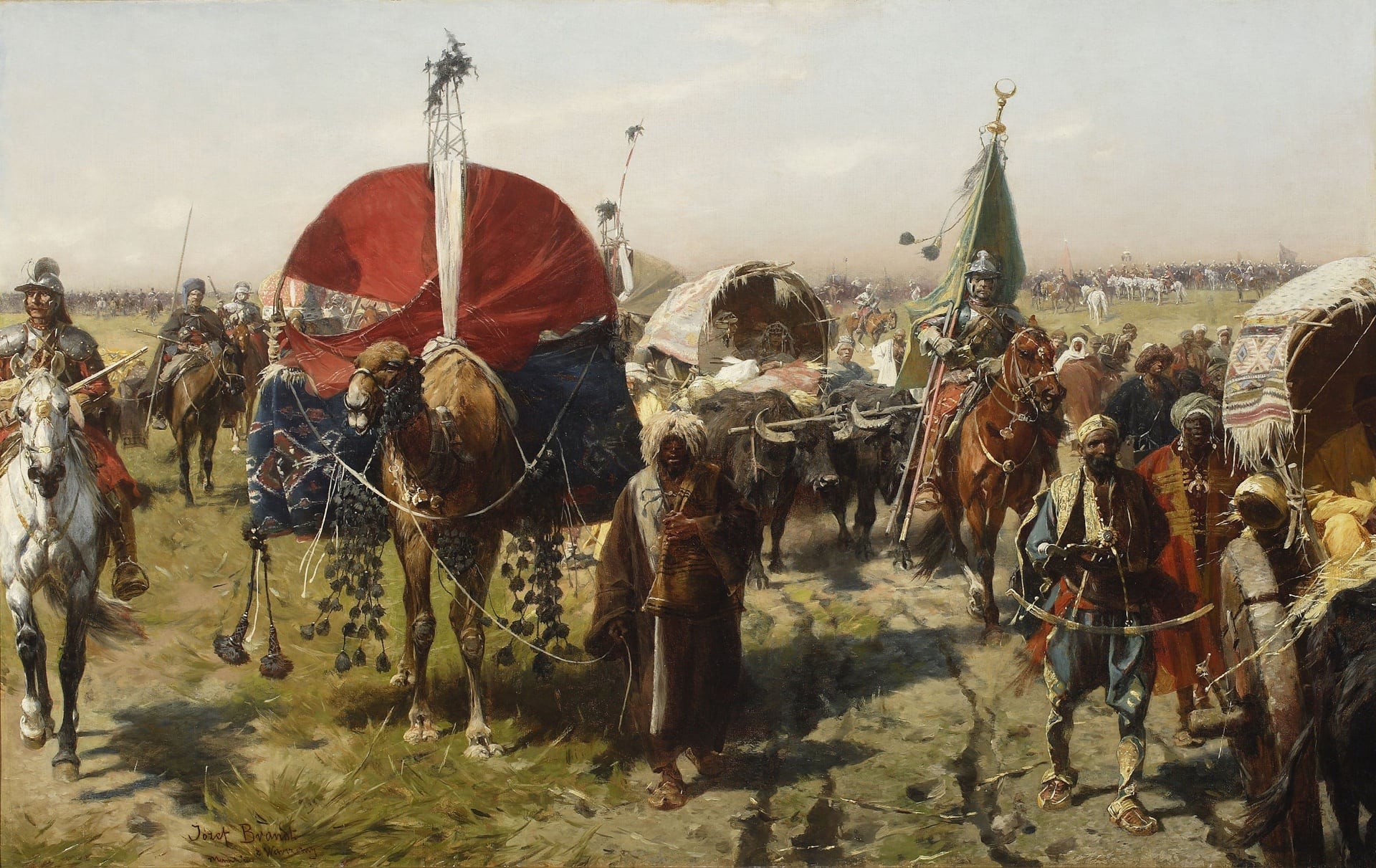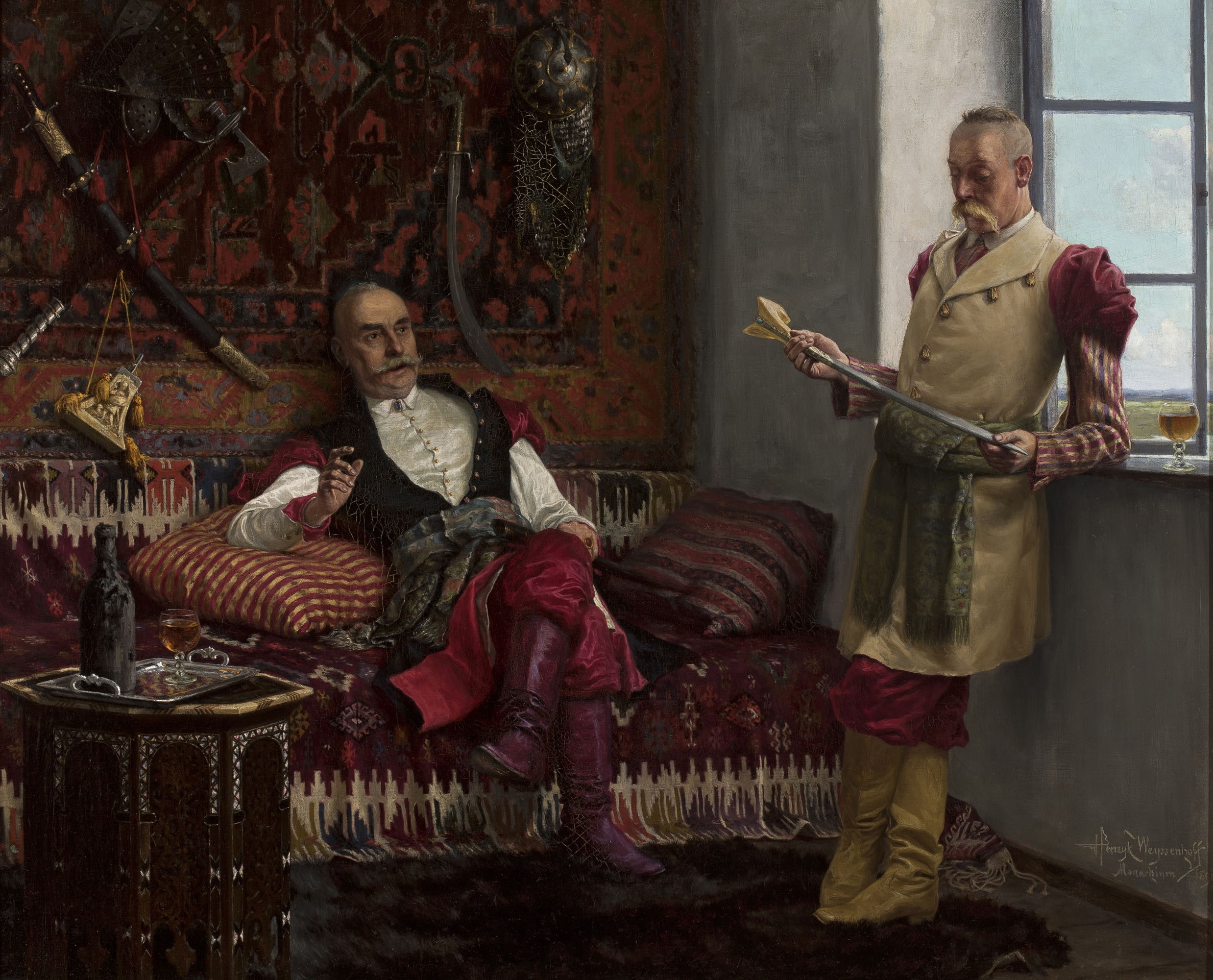28 November 2014

“At the Order of the Padishah”, Franciszek Żmurko, 1888. Oil on canvas, 135,5 X 240 cm.
In this piece, Żmurko presents an exotic image of a harem chamber, replete with gleaming fabrics and scattered jewels, as a setting for the statuesquely beautiful body of an odalisque murdered “at the order of the padishah”. The carefully arranged pose of the woman ensures compliance with the aesthetic canon of academism, discreetly eliding the drastic physiological details of death by strangulation. The fact that we are beholding a lifeless –but still beautiful – body is indicated only by the red cord visible at the odalisque’s neck. The dramatic import of this violent death in the oppressive, darkly sensuous atmosphere of the harem is amplified by the device of closing in the visual space with the heavy draperies surrounding the bed, the dishevelled sheets, the scattered furnishings and costly baubles, and the deep contrasts of darkness and light modelling the woman’s body, with its delicate carnation and fine contours.
This intoxicating combination of sumptuous scenery, unsettling eroticism, and death emanating from Żmurko’s painting was very much in tune with the prevailing tastes of the time. The elegant bourgeoisie, bored in its languid material contentment, welcomed stimuli of ecstasy and terror disguised in the props of exotic imaginary worlds. These provided a psychological respite from the convention-bound salons of polite society. At the Order of the Padishah, painted soon after Żmurko’s return from Paris, ranks among his strongest works, combining a well-balanced composition with adroit rendition of the opulent paraphernalia scattered about, a tastefully subdued colour palette and the perfection of the academic finis.
Ewa Micke-Broniarek

Józef Brandt harboured a fascination for the history of 17th century Poland, and his favourite themes included ballistic scenes and genre scenes before and after the battle proper –all and sundry marches, returns, supply trains, billets and encampments, patrols, and similar motifs illustrating the drudgery of warfare outside of its culminating moments.

Henryk Weyssenhoff, author of landscapes, prints, and illustrations, devoted much of his creative energies to realistic vistas of Belorussia, Lithuania, and Samogitia. A descendant of an ancient noble family which moved east to the newly Polonised Inflanty in the 17th century, the young Henryk was raised to cherish Polish national traditions.

Over the years of 1864 through 1876, Stanisław Chlebowski served Sultan Abdülaziz in Istanbul as his court painter. As it was, Abdülaziz disposed of considerable artistic talents of his own, and he actively involved himself in Chlebowski’s creative process, suggesting ideas for compositions –such as ballistic pieces praising the victories of Turkish arms.
Tuesday - Saturday 10:00 - 19:00
Friday 10:00 - 22:00
Sunday 12:00 - 18:00
The museum is closed on Mondays.
On Wednesdays, the students can
visit the museum free of admission.
Full ticket: 300 TL
Discounted: 150 TL
Groups: 200 TL (minimum 10 people)